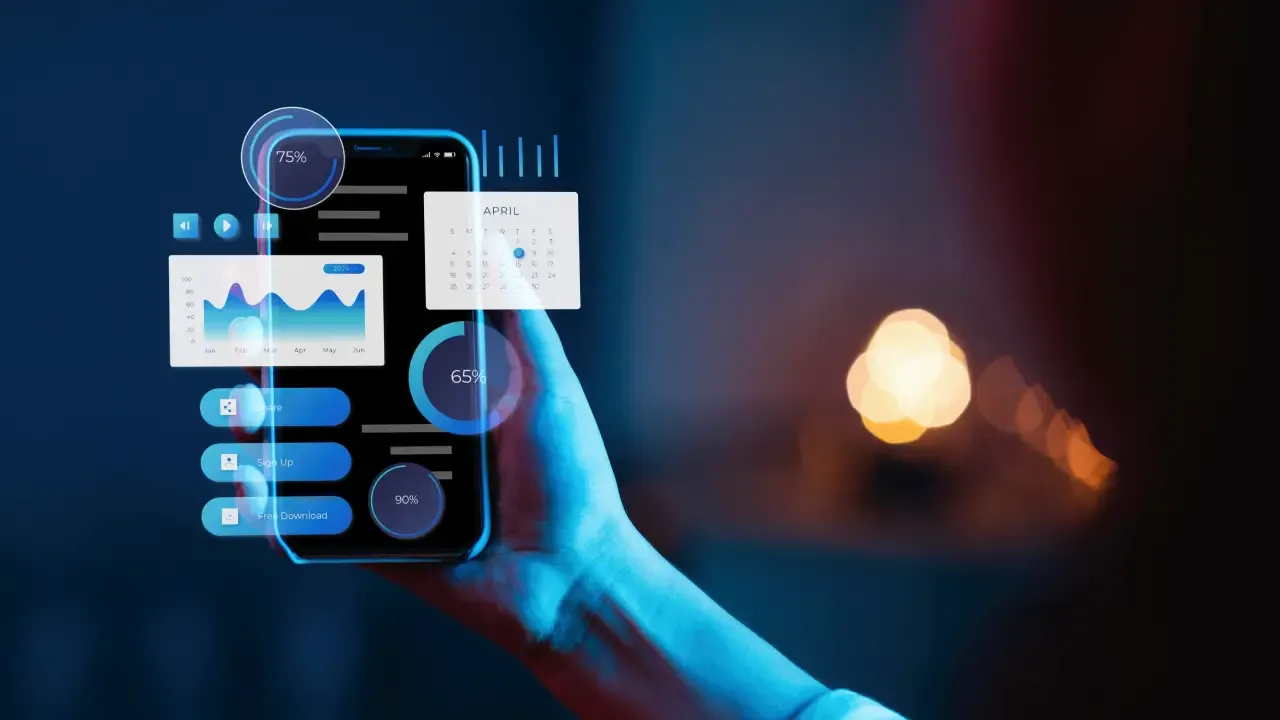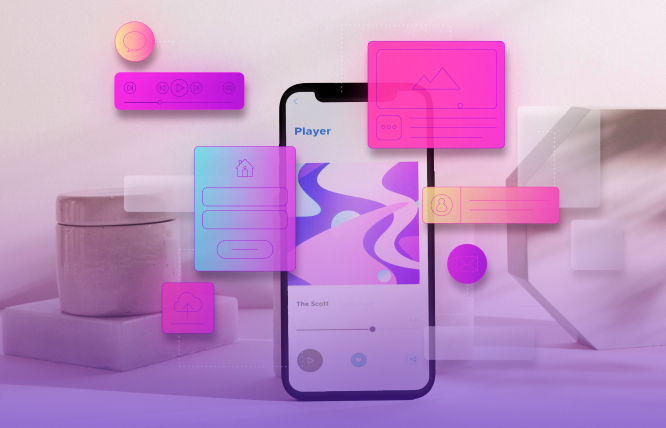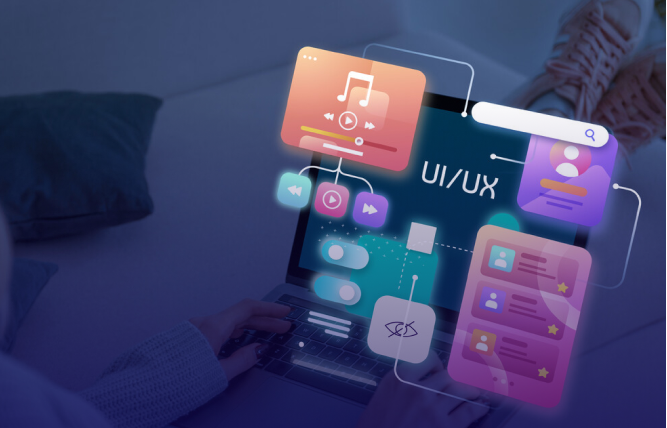Mobile technology has transformed how we live, work, and connect with one another. From ordering food and managing finances to streaming entertainment and working remotely, mobile apps are now the backbone of our digital lives. But as consumer expectations evolve and new technologies emerge, the world of mobile app development continues to advance at a rapid pace.
So, what does the future look like? As we step into 2025, businesses, developers, and entrepreneurs need to stay ahead of the curve. In this blog, we’ll explore the biggest trends shaping mobile app development in 2025 and how they will impact businesses across industries.
1. AI-Powered Apps
Artificial Intelligence (AI) is no longer a buzzword—it’s now a must-have feature in mobile apps. In 2025, AI will be deeply integrated into app design and functionality.
Examples of AI in mobile app development:
-
Personalised shopping experiences in e-commerce apps.
-
Smart chatbots for instant customer support.
-
Predictive analytics in finance and healthcare apps.
-
Real-time translation and voice recognition tools.
AI makes apps smarter, faster, and more user-friendly, providing personalised experiences that drive customer engagement.
2. 5G Technology Revolution
The rollout of 5G networks is transforming mobile connectivity. By 2025, most regions will enjoy widespread 5G coverage, opening doors for app developers to build more sophisticated solutions.
What 5G means for mobile app development:
-
Ultra-fast data transfer for seamless video streaming.
-
Lower latency, ideal for real-time gaming and AR/VR.
-
Enhanced IoT (Internet of Things) applications.
With 5G, apps that were once limited by speed and connectivity will unlock entirely new possibilities.
3. Augmented Reality (AR) and Virtual Reality (VR)
AR and VR aren’t just for gaming anymore—they are transforming industries like education, retail, real estate, and healthcare. In 2025, mobile apps will increasingly integrate AR/VR to provide immersive experiences.
Examples:
-
Virtual try-on apps for fashion and beauty.
-
AR-powered learning apps for students.
-
VR tours for real estate buyers.
-
Healthcare apps for virtual consultations.
As AR/VR technology becomes more accessible, businesses can engage customers in unique, interactive ways.
4. Cross-Platform Development
Building apps for both Android and iOS separately is costly and time-consuming. In 2025, cross-platform mobile app development will dominate, thanks to frameworks like Flutter and React Native.
Benefits of cross-platform apps:
-
Faster development cycles.
-
Reduced costs for businesses.
-
Consistent user experience across devices.
This approach allows startups and small businesses to launch apps quickly while reaching a wider audience.
5. Increased Focus on Cybersecurity
As mobile apps handle sensitive user data—financial details, health information, and personal identifiers—security is a top concern. Cyber threats are becoming more sophisticated, and regulators are enforcing stricter compliance standards.
Future of security in mobile apps:
-
Biometric authentication (face and fingerprint recognition).
-
End-to-end encryption for data protection.
-
AI-driven fraud detection systems.
Secure mobile app development not only builds user trust but also protects businesses from legal risks.
6. Wearable Device Integration
Wearables like smartwatches, fitness trackers, and AR glasses are now mainstream. By 2025, more mobile apps will be developed to integrate with wearable technology.
Examples of wearable app development:
-
Health monitoring apps tracking heart rate, sleep, and activity.
-
Payment apps linked to smartwatches.
-
Productivity apps with instant notifications on wearables.
This trend will open up new opportunities for businesses in healthcare, fitness, and lifestyle industries.
7. Internet of Things (IoT) Applications
The Internet of Things is rapidly expanding, connecting devices from refrigerators to cars. Mobile apps will increasingly act as control hubs for IoT devices.
Use cases of IoT apps in 2025:
-
Smart home automation apps (lights, security, appliances).
-
Fleet management apps for logistics.
-
Energy consumption monitoring for businesses.
Incorporating IoT into mobile app development creates convenience for users and efficiency for businesses.
8. Voice-Enabled Apps
Voice assistants like Siri, Alexa, and Google Assistant have set the stage for voice-driven apps. In 2025, voice commands will play an even bigger role in mobile applications.
Benefits of voice integration:
-
Hands-free convenience.
-
Accessibility for users with disabilities.
-
Faster search and navigation within apps.
Businesses that integrate voice technology into their apps will stay ahead in offering seamless user experiences.
9. Low-Code and No-Code Development
Not every business can afford a team of developers. Low-code and no-code platforms are democratizing app development, allowing entrepreneurs and small businesses to build functional apps quickly.
Advantages:
-
Faster app launch.
-
Reduced development costs.
-
Ability for non-technical users to create apps.
While these tools won’t replace professional developers, they’ll empower businesses to test ideas faster before scaling up.
10. Green and Sustainable Mobile Apps
With growing awareness about climate change, sustainability is making its way into tech. Mobile app development in 2025 will see a rise in eco-friendly initiatives.
Examples:
-
Apps that track carbon footprints.
-
Digital solutions that reduce paper usage.
-
Energy-efficient app coding to reduce power consumption.
Users are increasingly favoring businesses that prioritize sustainability, making green apps a smart move.
11. Super Apps: All-in-One Solutions
Popular in Asia, super apps combine multiple services into one platform—messaging, payments, shopping, and more. By 2025, this trend will expand globally.
Benefits of super apps:
-
Convenience for users.
-
Higher engagement for businesses.
-
Opportunities for cross-selling services.
Super apps will redefine customer engagement strategies in industries like retail, finance, and travel.
Conclusion
The future of mobile app development in 2025 promises to be exciting, innovative, and full of opportunities. With advancements in AI, 5G, AR/VR, IoT, and wearable integration, apps will become smarter, faster, and more immersive than ever before.
For businesses, staying competitive means keeping up with these trends and adopting the right mobile app strategies. Whether you’re a startup looking to launch your first app or an established brand seeking to improve customer experiences, embracing the future of mobile app development will be key to long-term success.
Frequently Asked Questions
Have questions or feedback?
Get in touch with us and we‘l get back to you and help as soon as we can!




